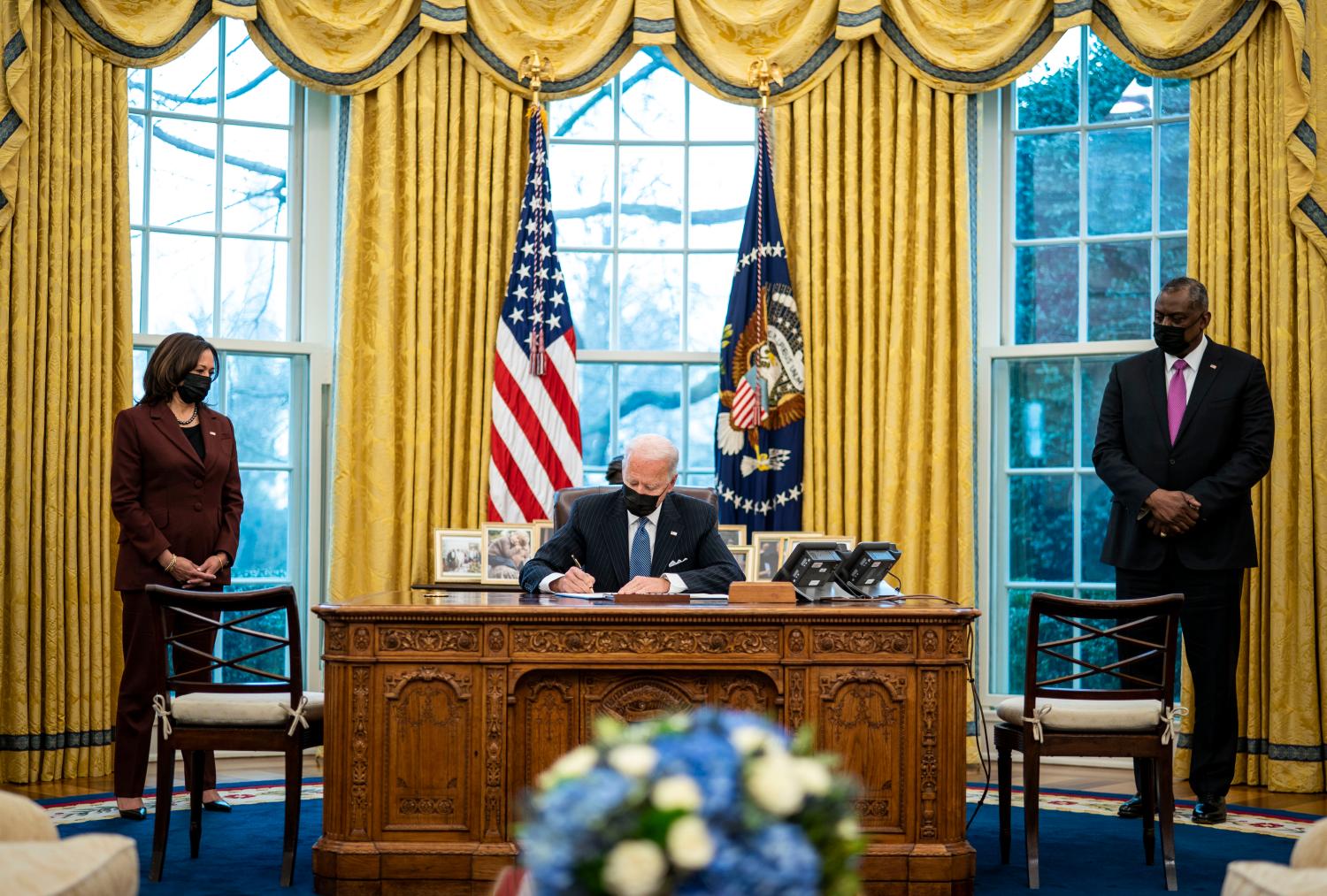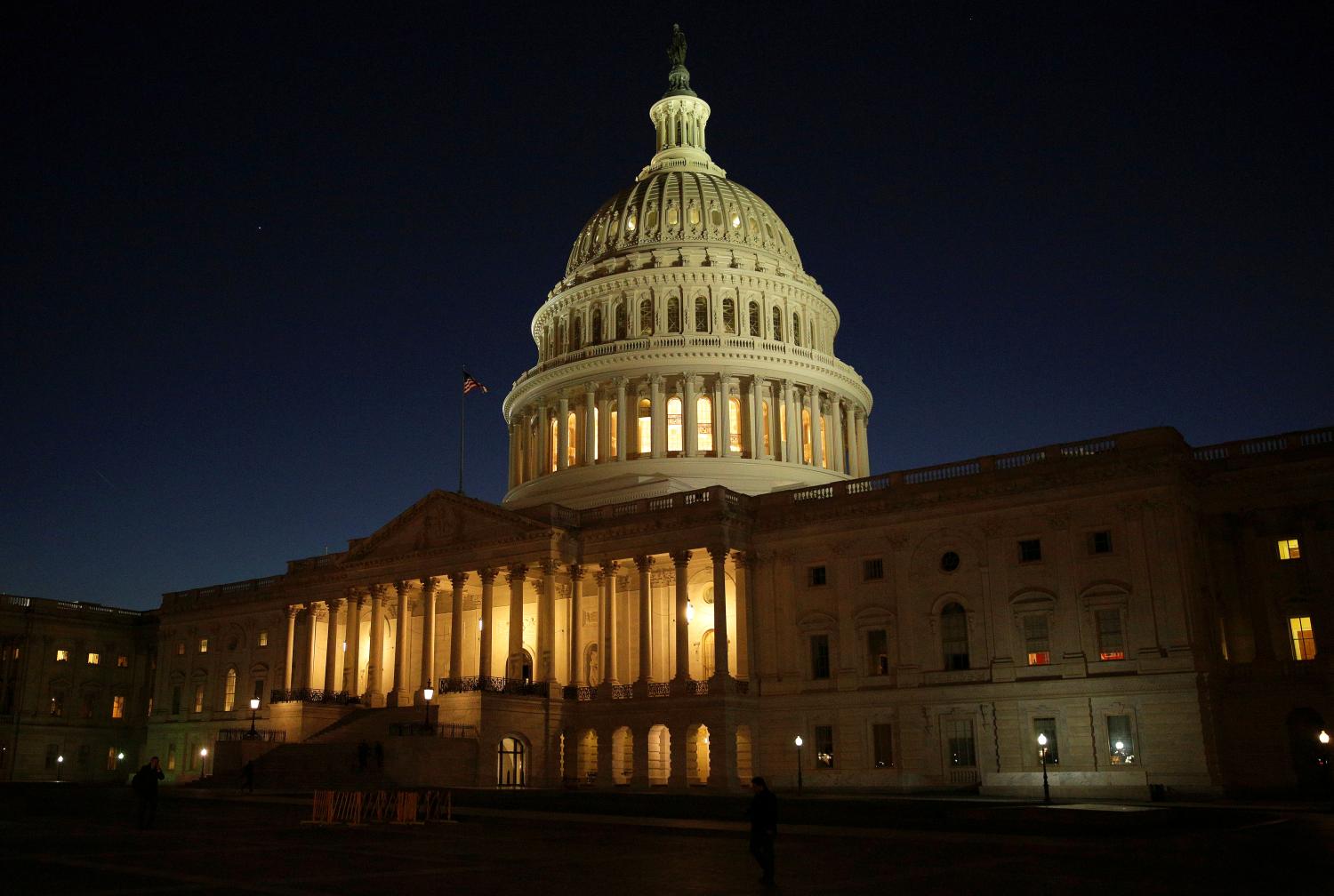Just hours after his inauguration, President Joe Biden set in motion a series of executive actions that will shape his regulatory agenda. Taken together, they demonstrate that the incoming administration will be responsive to complaints about the regulatory system it is inheriting while still relying on time-tested and valuable analytical techniques and processes. The result is a savvy, pragmatic set of policies that will help the new administration navigate the tough regulatory choices that lie ahead. How this plays out in practice, is, of course, what we will all be watching to see.
The new administration grabbed headlines with early executive actions on climate, COVID-19 response, racial equity, immigration, and more. But three less heralded Inauguration Day actions are likely to be equally significant for the regulatory system as whole.
Three early executive actions on regulatory policy
The first was a regulatory freeze memo from Chief of Staff Ron Klain, which temporarily stops the regulatory and guidance pipeline. The second was an executive order revoking President Trump’s signature regulatory policy orders, including Executive Order 13771, which put in place a regulatory two-for-one order and a cost-based regulatory budget, and directives on the preparation and use of guidance. The third was a presidential memorandum directing the Office of Information and Regulatory Affairs (OIRA) to modernize regulatory policy.
Each of these actions takes aim at a different time period. Revoking President Trump’s orders and other actions reaches back to uproot policies that were not aligned with the Biden-Harris Administration’s goals. The freeze memo ensures that new actions will not flow through the regulatory pipeline unless the new team agrees with them. The modernization memo, finally, is forward-looking, and as such gives the most insight into the Biden-Harris Administration’s regulatory plans.
The modernization memo, explained
The modernization memo first affirms long-standing regulatory policy by embracing President Clinton’s Executive Order 12866. That order has been in place since 1993. It sets out principles of regulation, asks agencies to put their regulatory proposals through various analytical steps including cost-benefit analysis, and tasks OIRA with regulatory review of draft agency rules. The memo also affirms Executive Order 13563, President Obama’s signature regulatory directive, which both affirmed EO 12866 and added new provisions for more complete consideration of benefits—particularly those that are hard or impossible to quantify like human dignity—and evaluation of rules that have been issued in the past, among other provisions. What could seem like a mere reference in passing to these two orders, both of which reflect sensible policies, actually carries significant weight in the larger regulatory policy debate.
Some progressive critics of EO 12866 and of OIRA may be frustrated to see these orders retained at all. From this perspective, a return to EO 12866 reverts to a flawed process that takes too long to produce results, with major regulatory breakthroughs thwarted by political oversight of the president and his advisors.
On the other hand, those who have generally supported OIRA and the EO 12866 framework will be glad to see them embraced as signs of a commitment to careful, deliberate policy-making that reaches beyond a single agency’s sometimes myopic perspective. But if this group hoped for an exact return to Clinton- or Obama-era regulatory policy, they will be disappointed, because of the memo’s emphasis on change rather than a return to the pre-Trump status quo.
A third group both supports a robust role for government regulation and believes that centralized regulatory review is useful for a well-functioning executive branch. They have argued for taking the structure and expertise of OIRA and deploying it for more pro-regulatory aims. The modernization memo and early personnel picks suggest the incoming administration is oriented in this latter direction.
In particular, the memo directs the Office of Management and Budget (OMB), of which OIRA is a part, to produce recommendations to improve and modernize regulatory review. As a general matter, the recommendations “should provide concrete suggestions on how the regulatory review process can promote public health and safety, economic growth, social welfare, racial justice, environmental stewardship, human dignity, equity, and the interests of future generations.”
The memo directs OMB to revise Circular A-4, which is the government’s playbook for regulatory analysis, including cost-benefit analysis. This circular was last amended in 2003 and the techniques have advanced since then, so it is due for an update. So long as OMB undertakes a careful update, marked by public comment and external peer review, a revised Circular A-4 will help synthesize and describe the state of the art of regulatory analysis.
The memo also calls for procedures that better take into account the distributional consequences of regulations. In practical terms, that means better consideration of who bears the costs and reaps the benefits of proposed regulations. Exactly what “better” means in this context is the core analytical challenge of this memo. While EO 12866 calls for consideration of distributional and equity effects, and the Obama Administration made incremental progress on this issue, much theoretical and practical work remains to be done. What might more complete distributional analysis look like, and how should agencies fold that analysis into their decision-making? Theoretical, practical, political, and legal questions abound.
If the result is a rulemaking process that helps avoid well-intentioned but regressive policies, we will be better off for it. For example, there is a raging debate right now about whether higher education debt cancellation, which is a very popular policy proposal, is regressive and therefore fails to target relief towards the people it intends to help. If distributional analysis can help the Department of Education better inform a program of debt cancellation, or perhaps counsel towards different forms of relief that better achieve the desired policy goal, then it will be a helpful tool for the regulator seeking to take steps in the public interest.
If, instead, distributional analysis merely pits some groups against other groups, the good aims of this analysis will be thwarted. The regulatory process is already replete with avenues for rent-seeking. This is indeed a primary complaint about the system as it stands today. It’s also not immediately obvious how the government should trade different interests off against each other. In the context of cost-benefit analysis, the theoretical north star is a policy choice that “maximizes net benefits” at a societal level. What standard should the government use to select among competing interests revealed by distributional analysis? Some of this will be zero sum, so OMB will need to translate the policy goals of the modernization memo into a politically feasible process lest it collapse under its own weight.
Next, the memo posits a more forward-leaning posture for OIRA on proposed regulations. Under EO 12866, OIRA largely reviews what agencies send it. OIRA has sometimes issued “prompt letters” to agencies to encourage particular regulatory activity, but this is not common. Under the new memo, OIRA is directed to partner with agencies “to explore, promote, and undertake regulatory initiatives that are likely to yield significant benefits.” In an administration oriented toward using the power of regulation to try to improve lives, this makes sense. As a practical matter, however, OIRA is a very small agency and may have limited ability to stimulate regulatory activity where an agency is not otherwise inclined to undertake it. It makes good sense, though, to bring OIRA into agency regulatory planning to help ensure that its cross-governmental perspective and expertise is incorporated from the start.
Lastly, the memo directs OMB to take steps to “promote the efficiency, transparency, and inclusiveness of the interagency review process, and determine an appropriate approach with respect to the review of guidance documents.” This is something of a regulatory policy potpourri, but it could nonetheless yield meaningful changes at OIRA and throughout the regulatory system.
Where Regulatory Policy Goes from Here
A president’s philosophy towards regulation is really important. The Trump Administration’s regulatory rhetoric was anchored around avoiding the perils of overregulation, at least in most sectors (when it came to immigration restrictions, the Administration was notoriously pro-regulation, using regulation to exclude people from asylum protections and other lawful ways to reside in the United States). We’ll have time to fully assess President Trump’s regulatory legacy, but it is fair to say, at a minimum, that the Trump Administration generally favored the rhetoric of regulatory restraint.
In a stark contrast, the modernization memo frames its directives around four major challenges: the COVID-19 pandemic and the associated economic downturn, systemic racial inequality, and climate change. While seeking bipartisan compromises and legislative solutions to confront these challenges, the memo signals that the administration is poised for proactive use of regulatory tools as well.
While we await publication of the first rules of the new administration, Republicans in Congress have a choice. They can have a hand in shaping the administration’s policy approach through legislation, or they can be sidelined while the executive takes the lead. Against this backdrop, the modernization memo is a savvy and practical document that articulates a compromise among Democrats and simultaneously positions the new administration for ambitious regulatory action.
The author served in an unpaid position on the Office of Management and Budget agency review team for the Biden-Harris Transition. The author did not receive financial support from any firm or person for this article or from any firm or person with a financial or political interest in this article. She is not currently an officer, director, or board member of any organization with a financial or political interest in this article.
The Brookings Institution is committed to quality, independence, and impact.
We are supported by a diverse array of funders. In line with our values and policies, each Brookings publication represents the sole views of its author(s).







